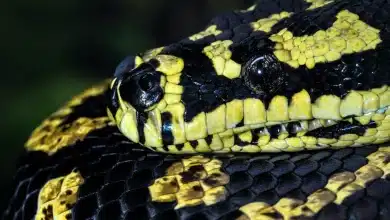Bungarus genus
-
front-fanged
Malayan Krait Interaction
[Last Updated: 21 June 2023] Malayan Krait Fact Page > Malayan Krait (Blue Krait) – A Common, Venomous, and Deadly…
Read More » -
Red Headed Krait (Bungarus flaviceps)
[Last update: 14 June 2023] Red Headed Krait – Venomous Snake Thais say: Ngoo sam lee-um hoo-uh si dang Length:…
Read More »

